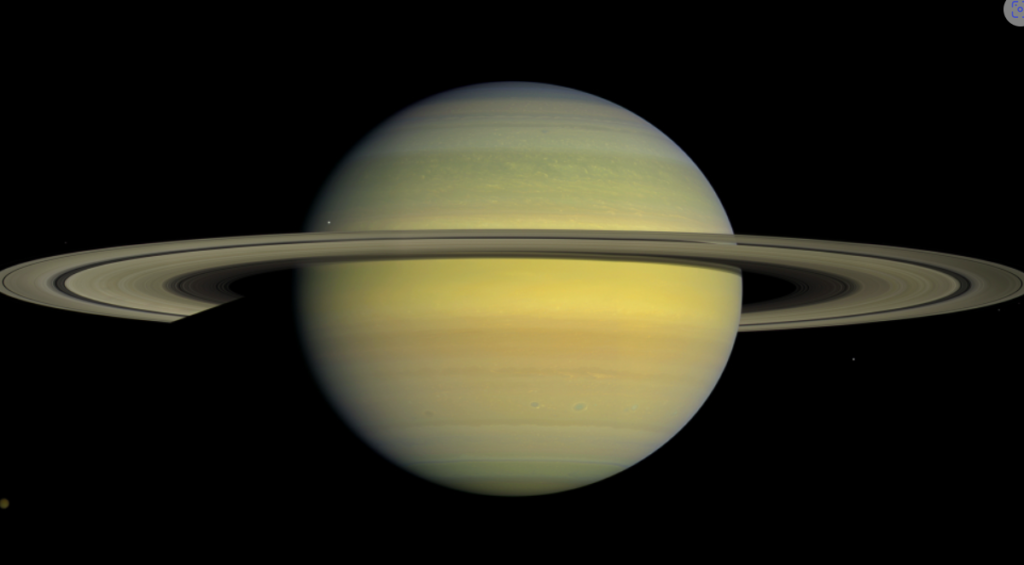

The planet Saturn has been referred to as having rings for hundreds of years. On the scale of a human lifetime, this striking planetary feature might as well be eternal, but we are discovering that these rings may eventually disappear and that they did not always there. The huge ring system’s origin has baffled scientists, and a recent supercomputer simulation suggests a dramatic lunar crash. Saturn’s moons might have begun crashing into one another to form the famous rings when the dinosaurs were sauntering around the planet.
The new study is the result of cooperation between Durham University, Glasgow University, and NASA’s Ames Research Center. It was published last week in The Astrophysical Journal. It expands on the knowledge gained by scientists from missions such as Cassini-Huygens, which established the surprising young age of Saturn’s moons and rings. This raised concerns about what precisely occurred in Saturn’s orbit to separate it from the other gas giant planets.
The scientists used Durham University’s Distributed Research utilizing Advanced Computing (DiRAC) supercomputer to investigate that conundrum. DiRAC performed simulations with about 100 times the resolution of previous models, simulating nearly 200 different scenarios of precursor moons pulverizing around Saturn.
Part of the frustrating issue with Saturn’s rings is that practically all of them are made of ice. The Roche Limit, where larger bodies will be ripped apart by the planet’s extremely powerful gravity, is where the rings now orbit. Moons can form when material combines outside of this area. The simulation suggests that what we see today might have been created tens of millions of years ago by the collision of two icy moons. Such objects would not have had extensively distributed stony cores, but their ice would have been distributed across the Saturnian system.
According to the models, if two moons collided, the resulting debris would likely shower other moons as well, possibly starting a chain reaction that would dump additional ice into the ring system. This could also account for the current moons of the planet’s relative youth. The majority of Saturn’s moons could be formed by the recombination of material that failed to settle inside the Roche Limit.
The question of how these putative moons ended up on a collision course is not addressed by this research. However, the team surmises that they may have been propelled into resonance by tiny gravitational pulls from the sun, which can force orbits to tilt and lengthen and cross previously separated pathways. The fact that Saturn’s moon Rhea is barely past the resonance point indicates that at some point in the past, as it slowly migrated away from the planet, it passed that boundary. Its orbit, however, is symmetrical and flat. This provides fresh proof that Rhea is a younger planet, possibly made of leftover material from the massive collision that created the rings. NASA wants to use a metal serpent to examine the possibility of life in Enceladus’ subterranean oceans, and this work may have an impact on that effort.